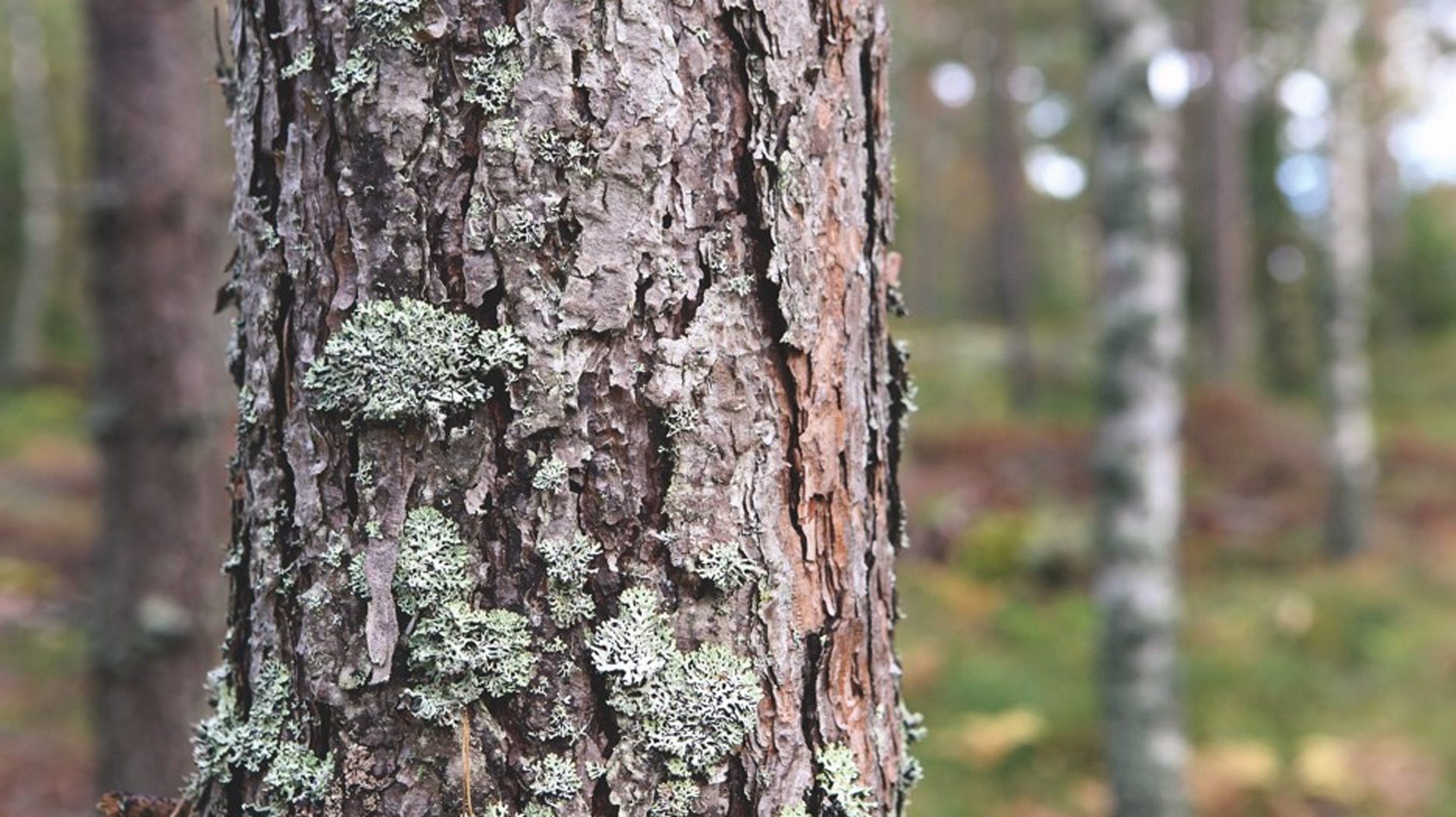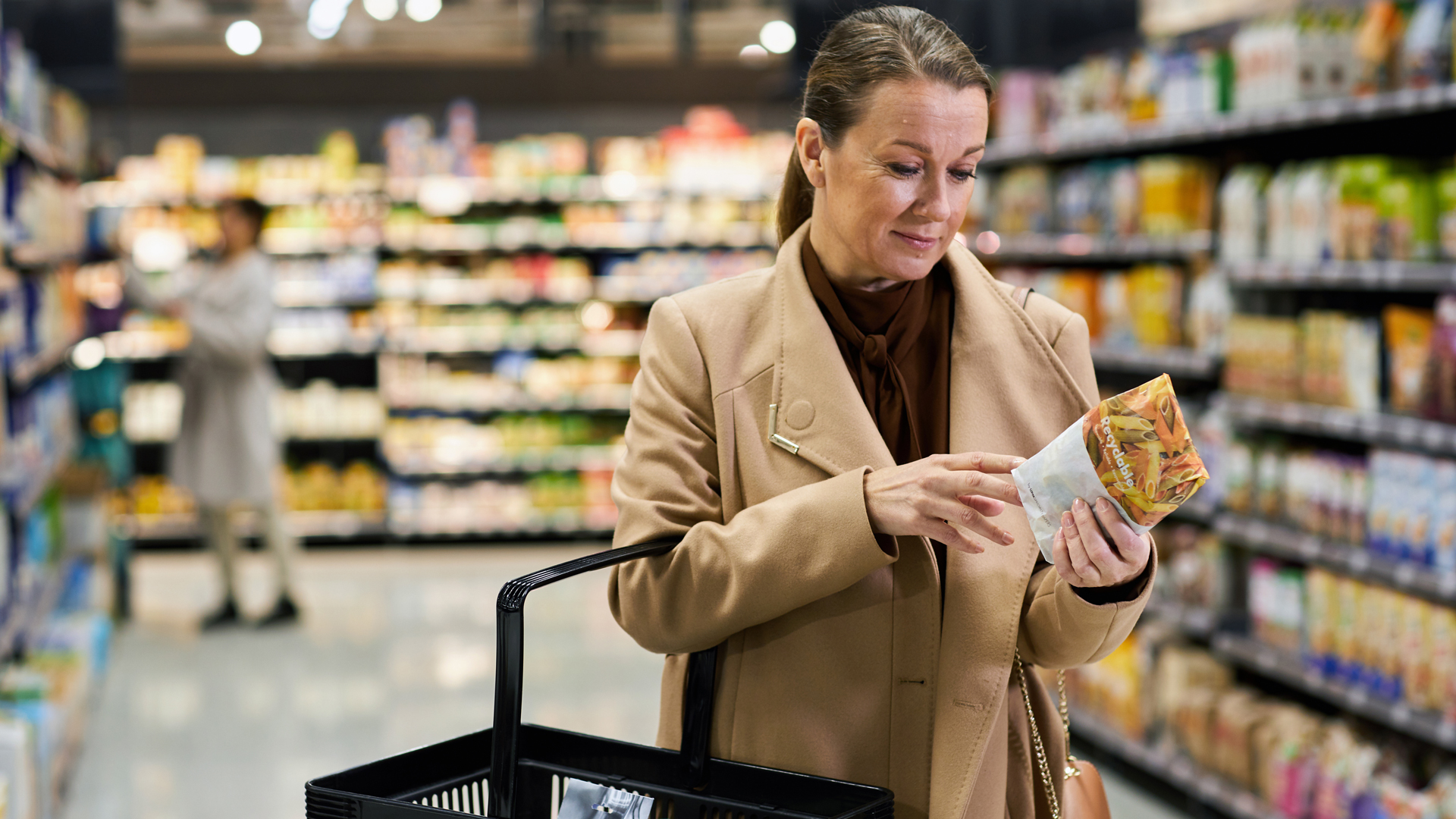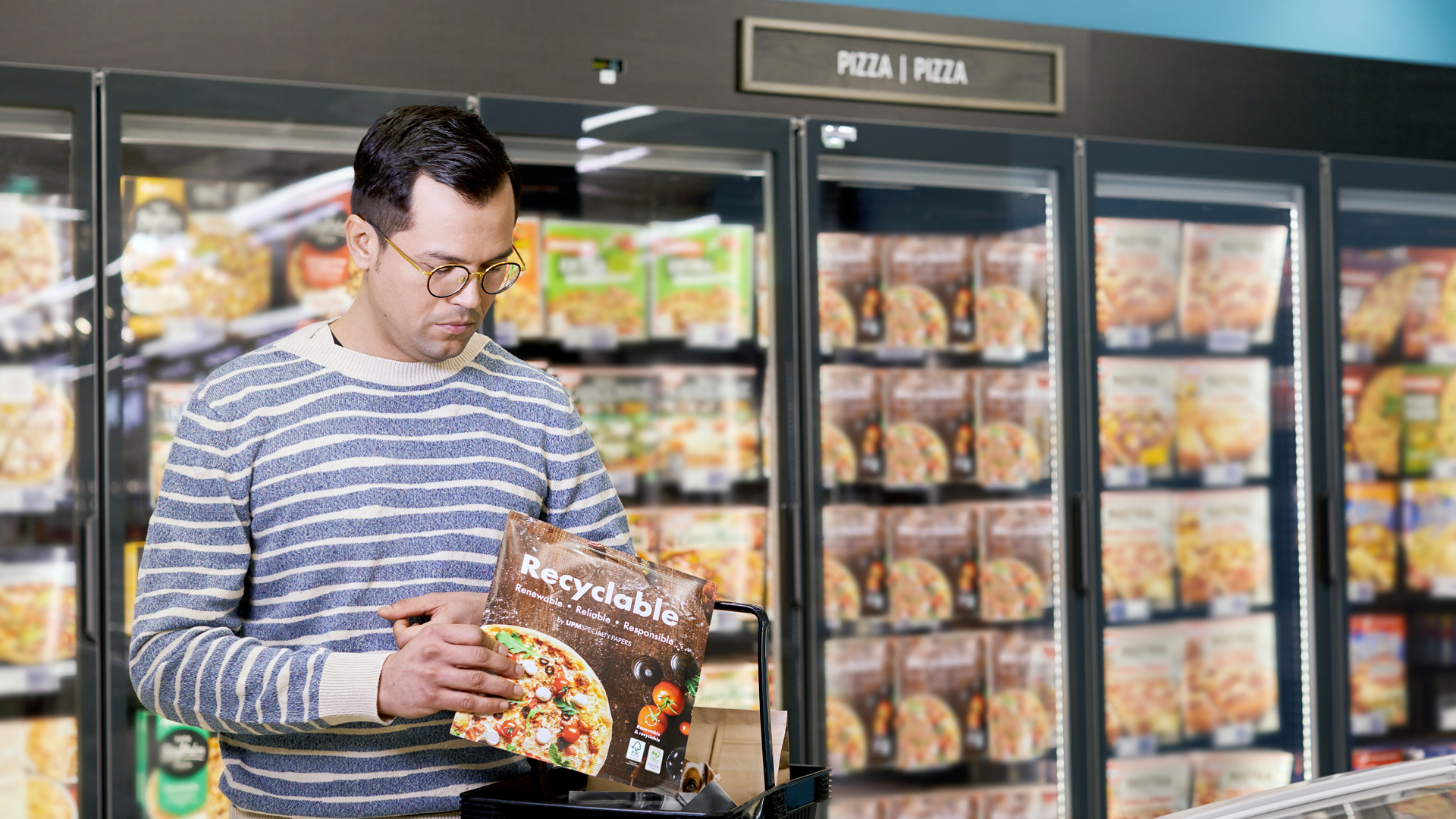The concept of ecodesign is at the heart of UPM, so we asked Christiane Laine, a Senior Researcher, and Esa Saukkonen, Manager, Packaging Portfolio Development, both working in product development in R&D to share their tips on how to design eco-friendly packaging.

Christiane Laine
 Esa Saukkonen
Esa Saukkonen
Holistic design
The first step in sustainable packaging design is to gather information. You need to know the application of the package, such as what will it carry? Will the food item need a barrier layer for special protection against grease or moisture, for example?. Where will it be sold, and what kind of recycling system do they have there? Packages should be designed to be recycled, but different markets have different end-of-life systems which can be taken into consideration at the design stage.
Choose a sustainable material
One of the most important steps is choosing a sustainable raw material. A renewable material such as paper is a great option. Trees are remarkably versatile. For end-uses that require a stronger barrier that paper cannot offer, you could even use bio-based polymers made from wood. Independent parties such as the Forest Stewardship Council can verify if the wood was sourced sustainably and won’t contribute to deforestation.

Renewable material, such as wood for paper, offers a route to sustainable packaging.
The most important thing is to choose the material and design that will best protect your product, thus tailoring the choice for the end-use (‘Fit-for-Purpose’). One study found that the climate impact of food waste can be far greater than the carbon footprint of the package’s manufacturing.
Look at the whole carbon footprint, not just the toeprint
If you want to know the real carbon footprint of a package, you need to know more than what the package is made of. Using renewable material such as paper is a great starting point, but it is also important to evaluate if the raw material was produced in an environmentally efficient way. UPM, for example, provides the carbon footprint calculation for its packaging papers in the certificate finder. However, that is only one part of the process. You also need to consider the carbon released during the shipping of the raw materials, manufacturing the product and recycling the package.
 Packaging is beginning to detail its carbon footprint on the label.
Packaging is beginning to detail its carbon footprint on the label.
Reduce packaging waste by getting the layers right
The food package on your grocery store shelf is a complex marvel. The package might consist of multiple layers, all with a specific role to play. Sustainability can be increased by using thinner layers or less material, for example, or perhaps you can find a way to use two layers instead of three. There are also monomaterial structures which don’t need additional layers at all. In general, monomaterials are easier to recycle than multi-layer packaging. For example, UPM Asendo™ Pro is a two-side coated barrier paper that can resist oil and moisture and can still be recycled in fibre recycling streams.
 Packaging sustainability can be increased with thinner layers and less material.
Packaging sustainability can be increased with thinner layers and less material.
Design for end-of-life
Design for packages to be recycled. The fibres of paper, for example, can be recycled seven or eight times before they break down and they can’t be recycled any more. Consider what happens next: can you recover the energy from the package, or maybe you want it to decompose naturally. Also, when should it decompose? Thermal insulation products for underground insulation should last decades, but we don’t want a packaging materials for food on-the-go to hang around that long. Thinking about recycling and the end of life of packages is a critical step of the design process.
Contact us if you would like to discuss how our paper can help you meet your goal of eco-friendly packaging.
Read more
What is the best end of life for packaging?
Bin the problem of food waste with proper packaging
Five benefits of barrier papers
